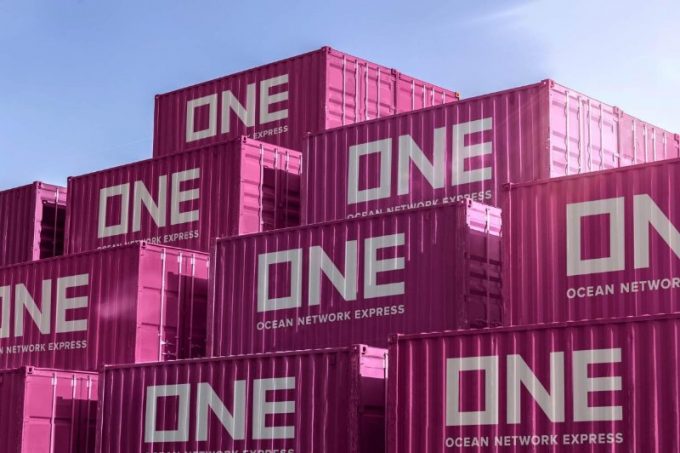ONE sees Q1 profits rise, but remains cautious as box shipping hits 'tipping point'
Ocean Network Express (ONE) reported a 12% year-on-year revenue increase in today’s Q1 results, along ...
GM: RAISING THE ROOF GGM: IN FULL THROTTLE GZIM: MAERSK BOOST KNIN: READ-ACROSSMAERSK: NOT ENOUGHMAERSK: GUIDANCE UPGRADEZIM: ROLLERCOASTERCAT: HEAVY DUTYMAERSK: CATCHING UP PG: DESTOCKING PATTERNSPG: HEALTH CHECKWTC: THE FALLGXO: DEFENSIVE FWRD: RALLYING ON TAKEOVER TALKODFL: STEADY YIELDVW: NEW MODEL NEEDEDWTC: TAKING PROFIT
GM: RAISING THE ROOF GGM: IN FULL THROTTLE GZIM: MAERSK BOOST KNIN: READ-ACROSSMAERSK: NOT ENOUGHMAERSK: GUIDANCE UPGRADEZIM: ROLLERCOASTERCAT: HEAVY DUTYMAERSK: CATCHING UP PG: DESTOCKING PATTERNSPG: HEALTH CHECKWTC: THE FALLGXO: DEFENSIVE FWRD: RALLYING ON TAKEOVER TALKODFL: STEADY YIELDVW: NEW MODEL NEEDEDWTC: TAKING PROFIT

Japanese shipping groups K Line, MOL and NYK, now operating as the Ocean Network Express (ONE) joint-venture, have unveiled their business plan, identifying more than $1bn a year in expected synergy cost savings.
The three carriers have signed off their final annual accounts covering the period before the transfer of their container businesses on 1 April.
Henceforth, the Japanese trio will record container earnings through their equity in ONE, in which NYK holds a 38% stake and K Line and MOL a 31% share each.
The three shipping groups spent significant amounts to form ONE, K Line reporting $220m in related costs.
MOL incurred a ¥47.4bn ($430m) net loss for its fiscal year ending 31 March which it blamed on losses “related to business restructuring”.
It decided to take a hit in its 2017 accounts for losses in relation to the integration of the business into ONE, which are projected to be incurred “from 2018 and afterwards”.
It said these included losses expected to be incurred on the “charter-out of vessels to ONE, losses on liquidation of the company’s agencies and others”.
However, MOL’s compatriots, NYK and K Line, were still able to record net profits of ¥20.1bn and ¥10.5bn respectively in their 2017 accounts.
In its final individual comment on liner trades, NYK reported that “shipping traffic was brisk along transpacific routes”, but added that increases in spot rates had “largely come to a standstill due to the impact of growing shipping capacity”.
It attributed the cause of the overcapacity to “the production of new ultra-large containerships”, but said it was itself migrating to ULCVs to “optimise vessel assignment and economic performance”.
Now ONE has published its three-year business plan and is predicting total revenue in the first year of $13.2bn, rising to $13.9bn in 2019 and $14.2bn in 2020.
It predicts that 47% of its revenue will come from its transpacific trades, 24% from Asia-Europe and 13% from intra-Asia services. The ONE portfolio target is for weekly liftings of 345,000 teu – 39% on the transpacific, 24% Asia-Europe and 22% intra-Asia.
It said: “Steady demand growth is expected against a background of a relatively favourable global economic situation, so the demand-supply will be stabilised on a mid-term basis.”
ONE is forecasting a net profit for this year of $110m, with the majority of that ($107m) expected to be earned in the second six months. For 2019, it expects to turn a profit of $313m and to more than double that the year after, to reach $648m.
The synergy savings from the merger are targeted at $1.05bn a year, 60% coming through in the first 12 months, 80% in the second year and the full 100% by year three.
According to ONE, $430m will come from savings on operational costs, such as feeders, trucking and terminal charges, where it will not only use the lowest tariff of the three carriers, but also negotiate reduced rates for higher volumes.
A further $370m is expected to be saved in IT costs and “rationalisation of the organisation”, with the final $250m annual savings gained from a reduction in bunker consumption and “product rationalisation”.
ONE said it had seven newbuild vessels of 14,000 teu planned for delivery this year and expected its total fleet at the end of its 2018 fiscal year to consist of 224 ships, amounting to 1.55m teu.
Comment on this article